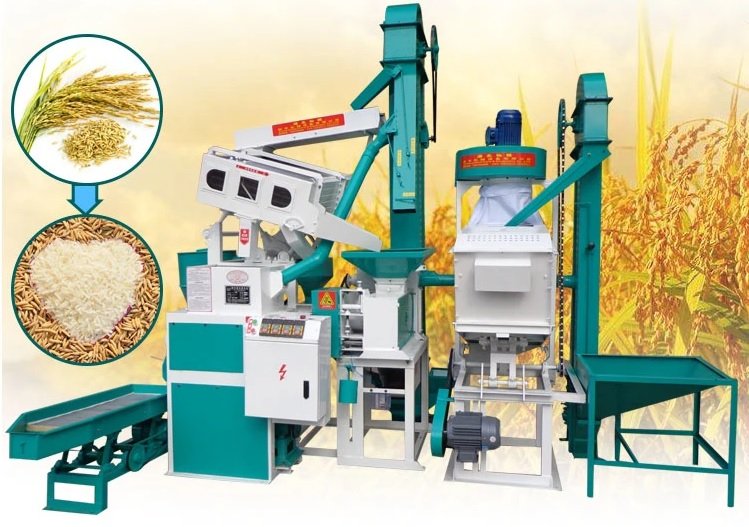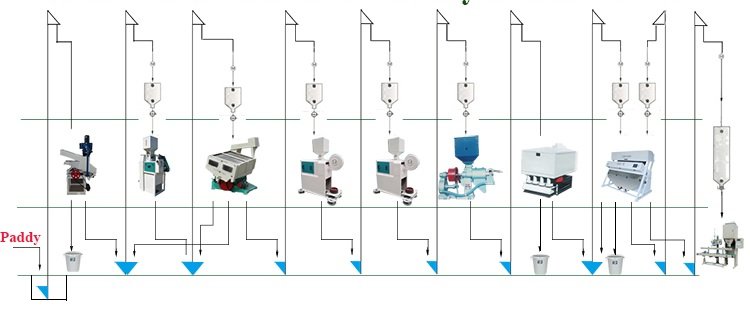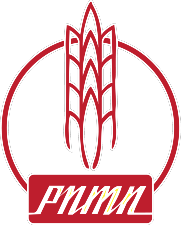Paddy in its raw form cannot be consumed by human beings. It needs to be suitably processed for obtaining rice. Rice milling is the process that helps in the removal of hulls and barns from paddy grains to produce polished white rice. Rice is best milled at 13-15% moisture content. Best results are attained when the process is completed in a number of stages. Grain temperatures should not exceed 45°C during the process. An efficient mill removes the husk (20%), the bran or meal (8-10%), and leaves 70% as white rice. Rice grown in irrigated systems should attain 60% white rice as head rice (unbroken, white kernels), and rainfed systems 40-50% as head rice. Rice forms the basic primary processed product obtained from paddy and this is further processed for obtaining various secondary and tertiary products.

Rice undergoes a number of different processing steps, such as:
Pre Cleaning: The first essential step is where the paddy from the fields is cleaned to get rid of dirt, dust, stones, and a variety of other impurities that form part of the paddy during the picking and transportation. This is the preliminary cleaning which also makes sure that harmful substances do not damage the machines down the line.
De-Stoning: Stones form a majority of impurities that enter into the rice. They can be of varying sizes, and different techniques are adopted to make sure they are all separated. Sieves of different sizes and also magnetic de-stoning machines are used in the industry.
Husking: Husk is the outer protective layer of the paddy. It has to be removed to expose the kernel which forms the rice for consumption. Roller machines do husk removal on passing through which the outer husk is pressed out, and the kernel and bran remain.
Husk Aspiration: White rice requires that husk and bran be removed from the rice to reveal only the kernel. Brown rice, on the other hand, retains part of the bran so that it has more fiber content and less nutrition loss. An aspirator helps separate the husk from the un-husked paddy.
Paddy Separation: The paddy to rice transformation is done in many steps, to separate brown rice and white rice. A paddy separator machine is used to remove the un-husked paddy to reveal brown rice, which retains the bran covering.
Whitening: To increase the appeal of the white rice by completely removing the bran, the whitening process is done. They are of two types of whitening processes; both employ friction to rub the bran off the rice yielding speckless rice grains.
Polishing: After whitening, the rice is further improved by removing any remaining bran surfaces and polishing it also to give a smooth appearance to the milled kernel.
Weighing & Bagging: Once the milling is completed, the rice is weighed and bagged to measurements as required by automated machines. It is now ready for transportation to the consumers.
Flow diagram of a modern rice mill
The flow diagram below represents the configuration and flow in a typical modern rice mill.

